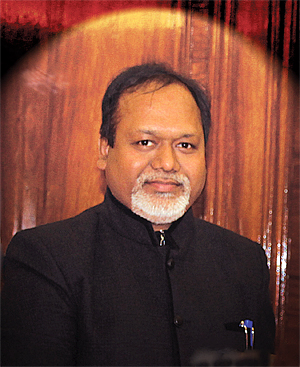INDIAN ARMED FORCES CHIEFS ON
OUR RELENTLESS AND FOCUSED PUBLISHING EFFORTS

SP Guide Publications puts forth a well compiled articulation of issues, pursuits and accomplishments of the Indian Army, over the years

I am confident that SP Guide Publications would continue to inform, inspire and influence.

My compliments to SP Guide Publications for informative and credible reportage on contemporary aerospace issues over the past six decades.
A word from Editor-in-Chief

The defence procurement process appears to remain mired in controversy leading to excruciating delays and often cancellation of tenders sometimes even in the last minute. This not only accentuates the despair in the armed forces but is also extremely frustrating for the global aerospace and defence industry majors.
An issue that is almost always in the forefront of news in the military domain in India is that of procurement of weapons systems and associated equipment from foreign sources as required by the armed forces of the nation. It is only understandable that this must be so as the Indian armed forces are embarked on a massive expansion and modernisation drive towards which the nation is expected to invest over $100 billion ( Rs. 5,50,000 crore) over the next five years. Over 70 per cent of these funds would fall in the share of foreign vendors. Unfortunately, more often than not, the defence procurement process appears to remain mired in controversy leading to excruciating delays and often cancellation of tenders sometimes even in the last minute. This not only accentuates the despair in the armed forces but is also extremely frustrating for the global aerospace and defence industry majors who expended enormous resources, time and effort while negotiating the tedious process of bidding for contracts, evaluation and final selection, and ultimately find themselves up against a wall or at a dead-end.
Apparently, somewhat concerned with the increasing frequency of instances of impropriety in the procurement process, the Ministry of Defence (MoD) has resorted to yet another revision of the Defence Procurement Procedure (DPP). Dubbed as DPP 2013, the new version of the document attempts to provide a level playing field for the indigenous industry. As per A.K. Antony, the Minister of Defence, the panacea for the ills plaguing the process of procurement of defence equipment is indigenisation. In this issue of SP’s Aviation, different authors delve into the various aspects of the procurement process, DPP 2013 and the issue of indigenisation. Air Marshal (Retd) Anil Chopra also examines the issue of foreign direct investment in defence and concludes that this is only way forward. While the Indian Air Force (IAF) awaits with bated breath for the news on award of the contract for 126 Rafale medium multirole combat aircraft (MMRCA), the MoD has floated a tender for 56 aircraft to replace the ageing fleet, the HS-748 Avro, in service with the IAF since the 1960s. Beginning with this issue, the case for MMRCA for the IAF will be reviewed in detail in a five-part series.
This is also the season for international air shows. R. Chandrakanth reviews the largest educational event in the aviation industry in Europe, EBACE, held in May this year at the magnificent Palexpo and Geneva International Airport. The event is jointly hosted each year by the European Business Aviation Association, the leading association for business aviation in Europe and the National Business Aviation Association, the leading voice for the business aviation industry in the US. In a curtain raiser for the other big event, the Paris Air Show in mid-June, Sucheta Das Mohapatra evaluates the mood in the industry and focuses on what to expect at the event.
In the civil aviation regime, Group Captain (Retd) A.K. Sachdev reviews the state of business aviation in India, its potential and impediments. The author is of the view that a change in perception of business aviation is not only overdue, but also a necessity in the challenging times the Indian economy is passing through. Writing from Goa, Group Captain (Retd) Joseph Noronha looks at the regional aviation scene in the country, the wide range of regional jets emerging on the scene for entrepreneurs to choose from and the steps the government is taking to spur its growth. R. Chandrakanth evaluates the expanding global helicopter market as rotary-wing platforms find their way into new segments of the business world.
All these apart from the regular features in this issue. Welcome aboard and happy landings!





